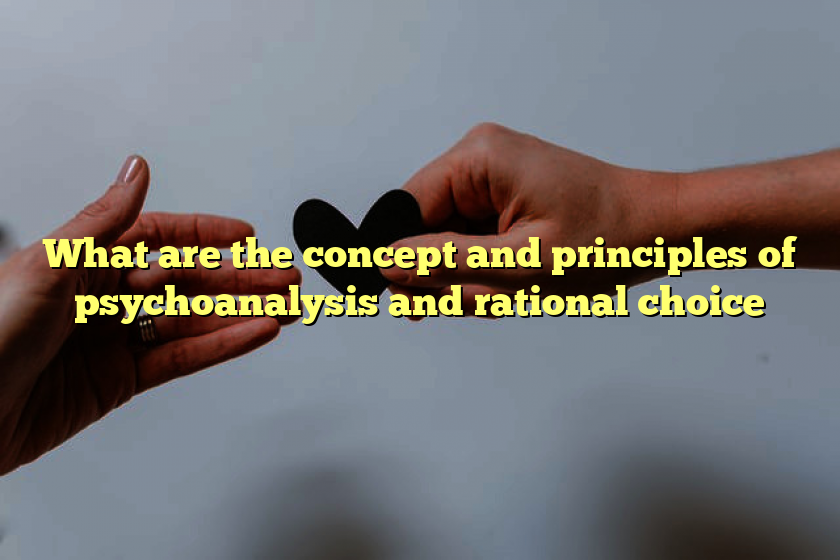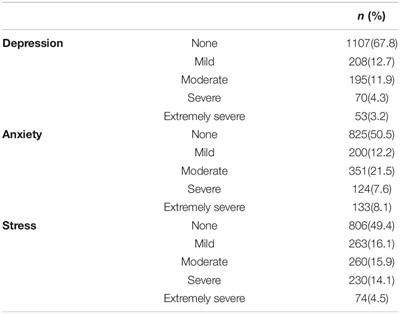Introduction to Rational Choice Theory in Social Work
Rational choice theory in social work is an important concept because it helps explain how individuals make decisions. According to the definition of rational choice theory, every choice that is made is completed by first considering the costs, risks and benefits of making that decision. Choices that seem irrational to one person may make perfect sense to another based on the individual’s desires.
Those who are studying for a social work degree will learn a variety of evidence-based theories to help them inform their work. Learning and understanding the meaning behind rational choice theory and seeing rational choice theory examples help future social workers characterize, explain and anticipate social outcomes. That can improve the treatment and services they provide their clients.
What is Rational Choice Theory?
Rational choice theory can apply to a variety of areas, including economics, psychology and philosophy. This theory states that individuals use their self-interests to make choices that will provide them with the greatest benefit. People weigh their options and make the choice they think will serve them best.
How individuals decide what will serve them best is dependent on personal preferences. For example, one individual may decide that abstaining from smoking is best for them because they want to protect their health. Another individual will decide they want to smoke because it relieves their stress. Although the choices are opposite, both individuals make these choices to get the best result for themselves.
Rational choice theory conflicts with some other theories in social work. For example, psychodynamic theory states that humans seek gratification due to unconscious processes. Conversely, rational choice theory states that there is always a rational justification for behaviors. Individuals try to maximize their rewards because they’re worth the cost.
History of rational choice theory
Rational choice theory origins date back centuries. Philosopher Adam Smith is considered the originator of rational choice theory. His essay “An Inquiry into the Nature and Causes of the Wealth of Nations,” from 1776, proposed human nature’s tendency toward self-interest resulted in prosperity. Smith’s term “the invisible hand” referred to unseen forces driving the free market.
Smith used the work of philosopher Thomas Hobbes’ “Leviathan” (1651) to influence his own work. In “Leviathan,” Hobbes explained that political institution functioning was a result of individual choices. Philosopher Niccolò Machiavelli, who wrote “The Prince” in 1513, also introduced ideas related to rational choice theory in his treatise.
Moving from economics to the social sciences, in the 1950s and 1960s, sociologists George C. Homans, Peter Blau and James Coleman promoted rational choice theory in relation to social exchange. These social theorists stated that a rational calculation of an exchange of costs and rewards drives social behavior.
Rational choice theory in social interactions explains why people enter into or end individual and group relationships.
Assumptions of rational choice theory
In order to fit the criteria for rational choice theory, the following assumptions are made.
- All actions are rational and are made due to considering costs and rewards.
- The reward of a relationship or action must outweigh the cost for the action to be completed.
- When the value of the reward diminishes below the value of the costs incurred, the person will stop the action or end the relationship.
- Individuals will use the resources at their disposal to optimize their rewards.
Rational choice theory expresses that individuals are in control of their decisions. They don’t make choices because of unconscious drives, tradition or environmental influences. They use rational considerations to weigh consequences and potential benefits.
Applications of rational choice theory
Rational choice theory has a wide variety of applications in all types of spheres affecting human populations.
- Economics and business: Rational choice theory can explain individual purchasing behaviors.
- Politics: Rational choice theory can be used to explain voting behaviors, the actions of politicians and how political issues are handled.
- Sociology: Rational choice theory can explain social phenomena. This is because all social change and institutions occur because of individual actions.
- Addiction treatment: Rational choice theory can be used to identify addiction motivations and provide substance alternatives that are equally beneficial to patients.
When there’s a need to describe, predict and explain human behavior, rational choice theory can be applied.
Strengths and weaknesses of rational choice theory
Rational choice theory can be helpful in understanding individual and collective behaviors. It helps to pinpoint why people, groups and society as a whole move toward certain choices, based on specific costs and rewards.
Rational choice theory also helps to explain seemingly “irrational” behavior. Because rational choice theory states that all behavior is rational, any type of action can be examined for underlying rational motivations. Rational choice theory can promote inquiry and understanding, helping differing parties, like a client and a therapist, to recognize the other’s rationale.
A limitation of rational choice theory is that it focuses on individual action. While one could say that individual action drives large social structures, some rational choice theory critics argue the theory is too limited in its explanation.
Another weakness of rational choice theory is that it doesn’t account for intuitive reasoning or instinct. For decisions that must be made in an instant, such as decisions that influence survival, there may not be time to weigh the costs and benefits.
How Does Rational Choice Theory Apply to Social Work?
In social work, rational choice theory helps social workers understand the motivations of those they work with. Using rational choice theory, social workers can uncover why their clients do certain things and have gotten into certain situations, even when they seem unfavorable.
Rational choice theory can also help social workers when they’re designing interventions and treatments. Knowing that their clients will make decisions based on what benefits them, social workers can use that understanding to guide their interactions with and recommendations for their clients.
Social workers can use rational choice theory to:
- Investigate the meaning behind their clients’ relationships, including with friend groups and romantic partners, including when those relationships are abusive or seem toxic.
- Examine why their clients behave in certain ways, including engaging in self-destructive behaviors and addictions.
- Understand how family dynamics and social interactions affect their clients.
- Create a better relationship between themselves and their clients, by positioning their work in a way that benefits the client.
- Promote interventions and create treatments that their clients will want to engage in because they see the benefits.
- Position resources so that clients understand how those resources will benefit them.
To optimize the use of rational choice theory in social work, social workers will need to create a thorough assessment that takes into consideration the details of the motivations behind their clients’ behavior.
Criticism of Rational Choice Theory
One potential issue with rational choice theory (PDF, 287 KB) is that it doesn’t account for non-self-serving behavior, such as philanthropy or helping others when there’s a cost but no reward to the individual. Rational choice theory also doesn’t take into consideration how ethics and values might influence decisions.
Another criticism is that rational choice theory doesn’t comment on the influence of social norms. An argument against rational choice theory is that most people follow social norms, even when they’re not benefitting from adhering to them.
Also, some critics say that rational choice theory doesn’t account for choices that are made due to situational factors or that are context-dependent. Factors like emotional state, social context, environmental factors and the way choices are posed to the individual may result in decisions that don’t align with rational choice theory assumptions.
Some critics also state that rational choice theory doesn’t account for individuals who make decisions based on fixed learning rules, in that they do things because that’s the way they’ve learned to do them—even when the decision has higher costs and fewer benefits.
Summary and Resources for Further Learning
Rational choice theory can be used in conjunction with other social work theories, like social learning theory and psychosocial development theory. Rational choice theory provides a framework for social worker intervention. It’s a jumping-off point for understanding clients and for analyzing cases using research and evidence to create more effective treatment.
To learn more about rational choice theory, check out these resources.
Did you know that you can study for a degree in social work online? We have made it easier for you to find and compare online social work degrees at all levels.
Last Updated: February 2022
Psychoanalysis: An Overview of Freud’s Psychoanalytic Therapy
Psychoanalysis: An Overview of Freud’s Psychoanalytic Therapy
By Dr. Saul McLeod, updated 2019
Psychoanalysis is defined as a set of psychological theories and therapeutic methods which have their origin in the work and theories of Sigmund Freud
The primary assumption of psychoanalysis is the belief that all people possess unconscious thoughts, feelings, desires, and memories.
The aim of psychoanalysis therapy is to release repressed emotions and experiences, i.e., make the unconscious conscious. It is only having a cathartic (i.e., healing) experience can the person be helped and “cured.”
Basic Assumptions
- Psychoanalytic psychologists see psychological problems as rooted in the unconscious mind.
- Manifest symptoms are caused by latent (hidden) disturbances.
- Typical causes include unresolved issues during development or repressed trauma.
- Freud believed that people could be cured by making conscious their unconscious thoughts and motivations, thus gaining insight.
- Treatment focuses on bringing the repressed conflict to consciousness, where the client can deal with it.
How can we understand the unconscious mind?
How can we understand the unconscious mind?
Remember, psychoanalysis is a therapy as well as a theory. Psychoanalysis is commonly used to treat depression and anxiety disorders.
In psychoanalysis (therapy) Freud would have a patient lie on a couch to relax, and he would sit behind them taking notes while they told him about their dreams and childhood memories. Psychoanalysis would be a lengthy process, involving many sessions with the psychoanalyst.

Due to the nature of defense mechanisms and the inaccessibility of the deterministic forces operating in the unconscious, psychoanalysis in its classic form is a lengthy process often involving 2 to 5 sessions per week for several years.
This approach assumes that the reduction of symptoms alone is relatively inconsequential as if the underlying conflict is not resolved, more neurotic symptoms will simply be substituted.
The analyst typically is a ‘blank screen,’ disclosing very little about themselves in order that the client can use the space in the relationship to work on their unconscious without interference from outside.
The psychoanalyst uses various techniques as encouragement for the client to develop insights into their behavior and the meanings of symptoms, including inkblots, parapraxes, free association, interpretation (including dream analysis), resistance analysis and transference analysis.
1) Rorschach inkblots
1) Rorschach inkblots

Due to the nature of defense mechanisms and the inaccessibility of the deterministic forces operating in the unconscious,
The Rorschach inkblot itself doesn’t mean anything, it’s ambiguous (i.e., unclear). It is what you read into it that is important. Different people will see different things depending on what unconscious connections they make.
The inkblot is known as a projective test as the patient ‘projects’ information from their unconscious mind to interpret the inkblot.
However, behavioral psychologists such as B.F. Skinner have criticized this method as being subjective and unscientific.
Click here to analyze your unconscious mind using inkblots.
2) Freudian Slip
2) Freudian Slip
Unconscious thoughts and feelings can transfer to the conscious mind in the form of parapraxes, popularly known as Freudian slips or slips of the tongue. We reveal what is really on our mind by saying something we didn’t mean to.
For example, a nutritionist giving a lecture intended to say we should always demand the best in bread, but instead said bed. Another example is where a person may call a friend’s new partner by the name of a previous one, whom we liked better.
Freud believed that slips of the tongue provided an insight into the unconscious mind and that there were no accidents, every behavior (including slips of the tongue) was significant (i.e., all behavior is determined).

3) Free Association
3) Free Association
Free association is a practice in psychoanalytic therapy, in which a patient talks of whatever comes into their mind. This technique involves a therapist giving a word or idea, and the patient immediately responds with the first word that comes to mind.
It is hoped that fragments of repressed memories will emerge in the course of free association, giving an insight into the unconscious mind.
Free association may not prove useful if the client shows resistance, and is reluctant to say what he or she is thinking. On the other hand, the presence of resistance (e.g., an excessively long pause) often provides a strong clue that the client is getting close to some important repressed idea in his or her thinking, and that further probing by the therapist is called for.
Freud reported that his free associating patients occasionally experienced such an emotionally intense and vivid memory that they almost relived the experience. This is like a “flashback” from a war or a rape experience.
Such a stressful memory, so real it feels like it is happening again, is called an abreaction. If such a disturbing memory occurred in therapy or with a supportive friend and one felt better–relieved or cleansed–later, it would be called a catharsis.
Frequently, these intensely emotional experiences provided Freud a valuable insight into the patient’s problems.
4) Dream Analysis
4) Dream Analysis
According to Freud the analysis of dreams is “the royal road to the unconscious.” He argued that the conscious mind is like a censor, but it is less vigilant when we are asleep.
As a result, repressed ideas come to the surface – though what we remember may well have been altered during the dream process.
As a result, we need to distinguish between the manifest content and the latent content of a dream. The former is what we actually remember.
The latter is what it really means. Freud believed that very often the real meaning of a dream had a sexual significance and in his theory of sexual symbolism he speculates on the underlying meaning of common dream themes.
Clinical Applications
Clinical Applications
Psychoanalysis (along with
Psychoanalysis (along with Rogerian humanistic counseling) is an example of a global therapy (Comer, 1995, p. 143) which has the aim of helping clients to bring about a major change in their whole perspective on life.
This rests on the assumption that the current maladaptive perspective is tied to deep-seated personality factors. Global therapies stand in contrast to approaches which focus mainly on a reduction of symptoms, such as cognitive and behavioral approaches, so-called problem-based therapies.
Anxiety disorders such as phobias, panic attacks, obsessive-compulsive disorders and post-traumatic stress disorder are obvious areas where psychoanalysis might be assumed to work.
The aim is to assist the client in coming to terms with their own id impulses or to recognize the origin of their current anxiety in childhood relationships that are being relived in adulthood. Svartberg and Stiles (1991) and Prochaska and DiClemente (1984) point out that the evidence for its effectiveness is equivocal.
Salzman (1980) suggests that psychodynamic therapies generally are of little help to clients with specific anxiety disorders such as phobias or OCDs but may be of more help with general anxiety disorders. Salzman (1980) in fact expresses concerns that psychoanalysis may increase the symptoms of OCDs because of the tendency of such clients to be overly concerned with their actions and to ruminate on their plight (Noonan, 1971).
Depression may be treated with a psychoanalytic approach to some extent. Psychoanalysts relate depression back to the loss every child experiences when realizing our separateness from our parents early in childhood. An inability to come to terms with this may leave the person prone to depression or depressive episodes in later life.
Treatment then involves encouraging the client to recall that early experience and to untangle the fixations that have built up around it. Particular care is taken with transference when working with depressed clients due to their overwhelming need to be dependent on others. The aim is for clients to become less dependent and to develop a more functional way of understanding and accepting loss/rejection/change in their lives.
Shapiro and Emde (1991) report that psychodynamic therapies have been successful only occasionally. One reason might be that depressed people may be too inactive or unmotivated to participate in the session. In such cases a more directive, challenging approach might be beneficial.
Another reason might be that depressives may expect a quick cure and as psychoanalysis does not offer this, the client may leave or become overly involved in devising strategies to maintain a dependent transference relationship with the analyst.
Critical Evaluation
Critical Evaluation
– Therapy is very time-consuming and is unlikely to provide answers quickly.
– People must be prepared to invest a lot of time and money into the therapy; they must be motivated.
– They might discover some painful and unpleasant memories that had been repressed, which causes them more distress.
– This type of therapy does not work for all people and all types of disorders.
– The nature of Psychoanalysis creates a power imbalance between therapist and client that could raise ethical issues.
Fisher and Greenberg (1977), in a review of the literature, conclude that psychoanalytic theory cannot be accepted or rejected as a package, ‘it is a complete structure consisting of many parts, some of which should be accepted, others rejected and the others at least partially reshaped.’
Fonagy (1981) questions whether attempts to validate Freud’s approach through laboratory tests have any validity themselves. Freud’s theory questions the very basis of a rationalist, scientific approach and could well be seen as a critique of science, rather than science rejecting psychoanalysis because it is not susceptible to refutation.
The case study method is criticized as it is doubtful that generalizations can be valid since the method is open to many kinds of bias (e.g., Little Hans).
However, psychoanalysis is concerned with offering interpretations to the current client, rather than devising abstract dehumanized principles. Anthony Storr (1987), the well-known psychoanalyst appearing on TV and Radio 4’s ‘All in the Mind’, holds the view that whilst a great many psychoanalysts have a wealth of ‘data’ at their fingertips from cases, these observations are bound to be contaminated with subjective personal opinion and should not be considered scientific.
Learning Check: You are the Therapist
Learning Check: You are the Therapist
Read through the notes below. Identify the methods the therapist is using. What do you think Albert’s problem is?
A young man, 18 years old, is referred to a psychoanalyst by his family doctor. It seems that, for the past year, the young man (Albert) has been experiencing a variety of symptoms such as headaches, dizziness, palpitations, sleep disturbances – all associated with extreme anxiety. The symptoms are accompanied by a constant, but periodically overwhelming fear of death. He believes that he has a brain tumor and is, therefore, going to die. However, in spite of exhaustive medical tests, no physical basis for the symptoms can be identified. The doctor finally concludes that Albert’s symptoms are probably psychologically based.
Albert arrives at the analyst’s office accompanied by his parents. He describes his problems and depicts his relationship with his parents as ‘rosy’ – though admitting that his father may be ‘a little on the strict side.’ It emerges that his father will not permit Albert to go out during the week, and he must be home by 11 pm at weekends.
Additionally, he successfully broke up a relationship between Albert and a girlfriend because he thought they were getting ‘too close.’ In describing this, Albert shows no conscious resentment, recounting the events in an emotional, matter of fact manner.
During one session, in which Albert is encouraged to free associate, he demonstrated a degree of resistance in the following example:
‘I remember one day when I was a little kid, and my mother and I were planning to go out shopping together. My father came home early, and instead of my mother taking me out, the two of them went out together leaving me with a neighbor. I felt……for some reason my mind has gone completely blank.’
This passage is fairly typical of Albert’s recollections.
This passage is fairly typical of Albert’s recollections.
Occasionally, Albert is late for his appointments with the therapist, and less often he misses an appointment, claiming to have forgotten.
ALBERT’S DREAM
During one session Albert reports a dream in which his father is leaving on a train, while Albert remains on the platform holding hands with both his mother and his girlfriend. He feels both happy and guilty at the same time.
Sometime later, after the therapy sessions have been going on for several months, the analyst takes a two weeks holiday. During a session soon afterward Albert speaks angrily to the therapist.
‘Why the hell did you decide to take a holiday with your damned wife just as we were beginning to get somewhere with my analysis.’
How to reference this article:
How to reference this article:
McLeod, S. A. (2019). Psychoanalysis. Simply Psychology. www.simplypsychology.org/psychoanalysis.html
APA Style References
Comer, R. J. (1995). Abnormal psychology (2nd ed.). New York: W. H. Freeman.
Fisher, S., & Greenberg, R. P. (1977). The scientific credibility of Freud’s theories and therapy. Columbia University Press.
Fonagy, P. (1981). Several entries in the area of psycho-analysis and clinical psychology.
Freud, S. (1916-1917). Introductory lectures on psychoanalysis. SE, 22: 1-182.
Freud, A. (1937). The Ego and the mechanisms of defense. London: Hogarth Press and Institute of Psycho-Analysis.
Noonan, J. R. (1971). An obsessive-compulsive reaction treated by induced anxiety. American Journal of Psychotherapy, 25(2), 293.
Prochaska, J., & C. DiClemente (1984). The transtheoretical approach: Crossing traditional boundaries of therapy. Homewood, Ill., Dow Jones-Irwin.
Salzman, L. (1980). Treatment of the obsessive personality. Jason Aronson Inc. Publishers.
Shapiro, T., & Emde, R. N. (1991). Introduction: Some Empirical Approaches To Psychoanalysis. Journal of the American Psychoanalytic Association, 39, 1-3.
Storr, A. (1987). Why psychoanalysis is not a science. Mind-waves.
Svartberg, M., & Stiles, T. C. (1991). Comparative effects of short-term psychodynamic psychotherapy: a meta-analysis. Journal of consulting and clinical psychology, 59(5), 704.
How to reference this article:
How to reference this article:
McLeod, S. A. (2019). Psychoanalysis. Simply Psychology. www.simplypsychology.org/psychoanalysis.html
Home
|
About Us
|
Privacy Policy
|
Advertise
|
Contact Us
Back to top
Simply Psychology’s content is for informational and educational purposes only. Our website is not intended to be a substitute for professional medical advice, diagnosis, or treatment.
© Simply Scholar Ltd – All rights reserved




